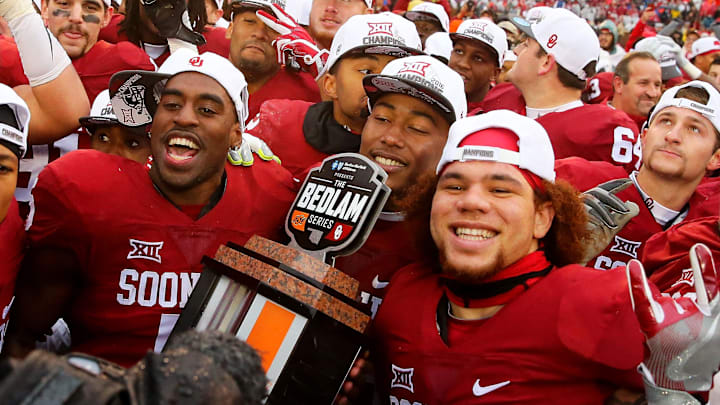The Bedlam rivalry between the Oklahoma Sooners and Oklahoma State Cowboys was once a staple of college football, particularly in the state of Oklahoma. For over a century, the annual matchup served as a defining moment for both programs, especially during their time together in the Big 12 Conference. With deep-rooted traditions and statewide bragging rights at stake, the series captivated fans and played a significant role in the college football landscape.
However, that long-standing rivalry came to a halt when Oklahoma announced its move to the Southeastern Conference. The shift in conference alignment meant that the automatic scheduling of the Bedlam game each year was no longer guaranteed. As a result, what was once a regular and highly anticipated event on the college football calendar quietly disappeared.
A New SEC Schedule Opens the Door
In a recent development that could breathe new life into the rivalry, the SEC announced a revised scheduling format that includes a nine-game conference slate and a requirement for each team to schedule at least one nonconference opponent from a Power Four conference—or Notre Dame—each season. That mandate provides Oklahoma with an incentive to line up annual games against prominent programs like Nebraska or Oklahoma State, both of which would meet the Power Four requirement while also restoring fan-favorite matchups.
OU general manager Jim Nagy expressed strong support for this idea over the summer, stating that he believes both Nebraska and Oklahoma State should be permanent fixtures on Oklahoma’s schedule moving forward. His comments echoed the sentiment of many within the OU community who want to see the Bedlam rivalry continue, even outside the framework of a shared conference.
Oklahoma Reaches Out — But OSU Isn’t Biting
In the spirit of keeping Bedlam alive, Oklahoma Athletic Director Joe Castiglione reportedly reached out to Oklahoma State leadership to discuss the possibility of scheduling the rivalry as a nonconference game in future seasons. However, those overtures were met with minimal enthusiasm. Sources indicate that Oklahoma State has shown little interest in reviving the annual matchup, at least for now.
Part of OSU’s hesitancy could be attributed to scheduling challenges. With nonconference slots often booked years in advance, rearranging existing contracts and commitments to make room for Bedlam may not be a simple process. Additionally, there may be strategic and financial considerations at play, including questions about whether playing OU outside of conference play is in OSU’s best long-term interest.
Looking to the Future
Despite Oklahoma State’s current stance, there is still a path forward for Bedlam to return—though not immediately. Both programs have nonconference schedules laid out nearly a decade in advance, meaning that the earliest realistic opportunity to renew the rivalry may not come until the 2030s. Still, the SEC’s nonconference requirement, coupled with internal support at OU, could keep the conversation alive.
Nagy even floated the idea of alternating annual matchups between Nebraska and Oklahoma State, allowing Oklahoma to preserve two of its most historic rivalries without overwhelming its scheduling flexibility. That kind of creative solution could satisfy both the competitive needs of the program and the emotional pull of tradition.
The Legacy of Bedlam Still Matters
While Bedlam may be on pause, its legacy continues to resonate. For generations of players and fans, the rivalry represented more than just a football game—it was a cultural event that brought the entire state of Oklahoma together, if only to take sides. The fierce competition, unforgettable moments, and deep-seated animosity made it one of the most compelling matchups in college football.
Reviving Bedlam would do more than satisfy nostalgia. It would provide both programs with a high-profile, high-stakes game that boosts strength of schedule, draws national attention, and delivers an emotional jolt to the fanbase. And with the changing dynamics of college football, particularly the expansion of conferences and the evolving playoff format, maintaining traditional rivalries has become increasingly valuable.
For now, Oklahoma has made its intentions clear. The question is whether Oklahoma State will eventually come around to the idea. Until then, fans can only hope that Bedlam hasn't disappeared for good but is simply taking a break before its next great chapter begins.
